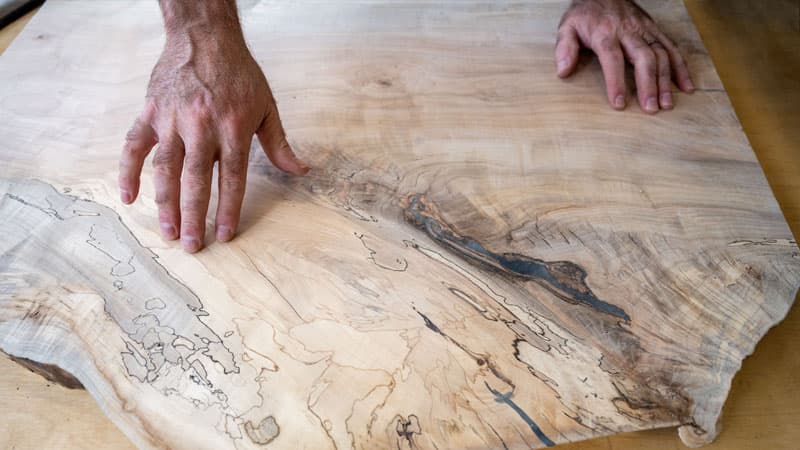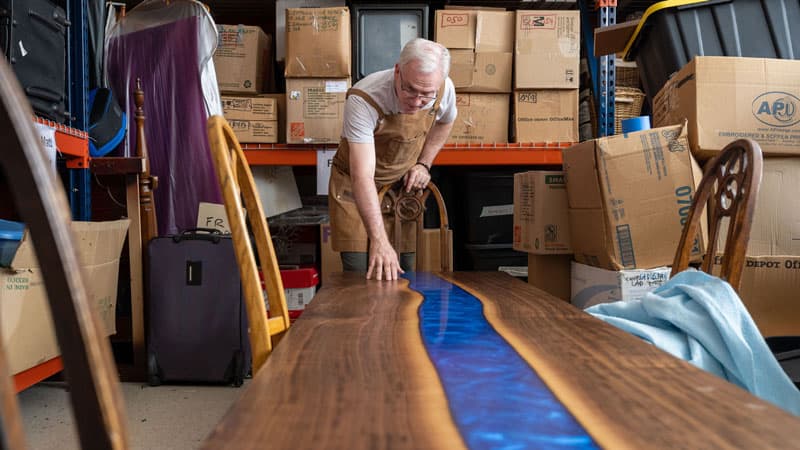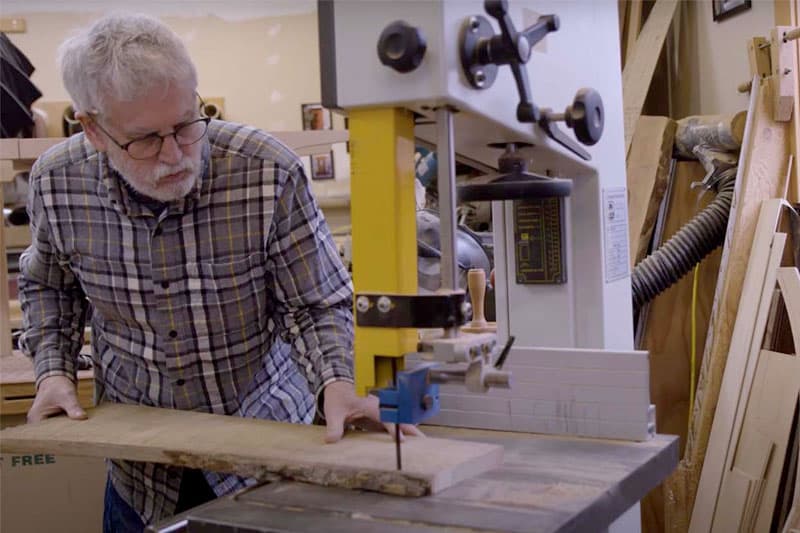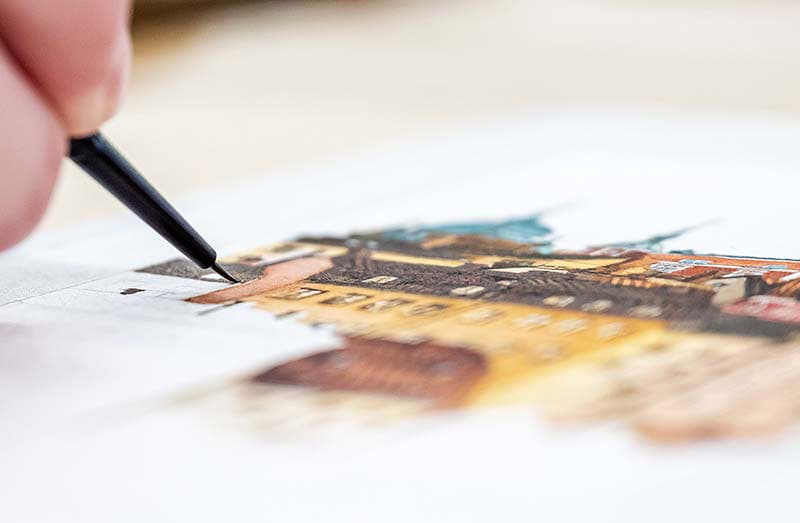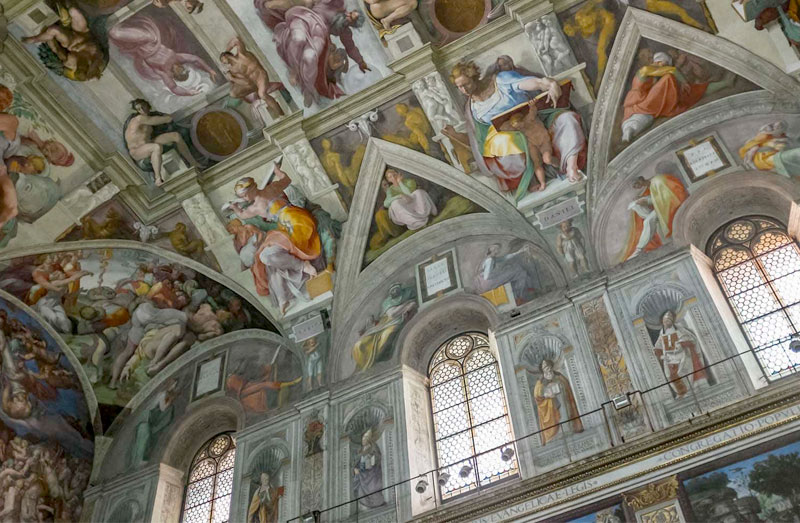Tucked into a stand of trees, just between the lakes on campus, is the Annex. A plaque outside a substantial workshop within the building introduces visitors to Sacred Heart Woodworking. Etched into the plaque is the University seal and the cross and anchors, the emblem of the Congregation of Holy Cross. Between the two symbols of the University is the likeness of a wooden chalice with a nail running through the base.
The original chalice, made from the driftwood of a refugee boat, was used by Pope Francis in 2013 at a Mass in Lampedusa, Italy, to mourn migrants lost at sea. Rev. Daniel G. Groody, C.S.C., has a replica of that chalice made from the same wood.
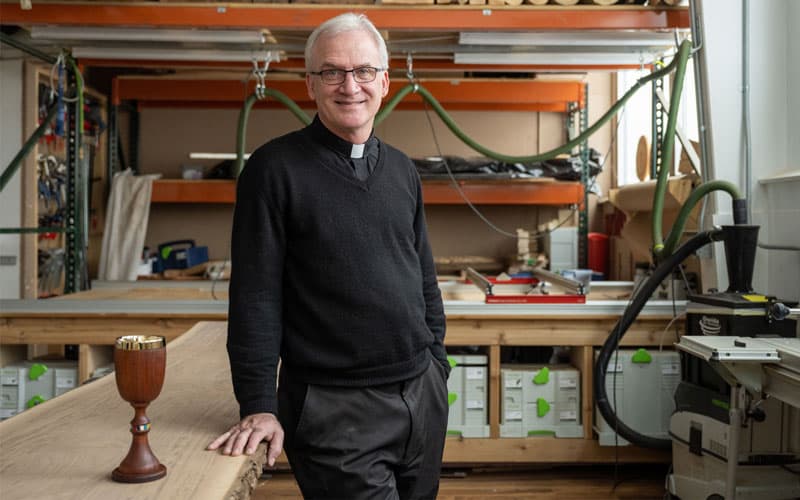
Father Groody, the vice president and associate provost for undergraduate education, a professor of theology and global affairs and an avid woodworker, established the workshop with Paul Berrettini during the COVID shutdowns. What might at first blush appear to be an unseemly mashup of vocation and avocation is actually a seamless meshing of passion, devotion and skill. Father Groody aptly describes his work in both areas as being “in the service industry, and my boss is a carpenter.”
Father Groody’s most recent book, “A Theology of Migration: The Bodies of Refugees and the Body of Christ,” speaks to his deep concern about what is happening in the world to those fleeing abhorrent conditions for a better life.
“Thousands of people die each year in the Mediterranean and no one knows about it. And the only thing left is the remnant of pieces of the ships,” Father Groody said of the wood recovered and made into the chalice. The base was made from mesquite from the deserts of the American Southwest, where economic migrants cross the southern border. “You literally have a migrant and refugee crisis as part of the story of this chalice.”
The story of the Mass and his own writing and research brought Father Groody back to woodworking. After a 40-year break, Father Groody found himself in the craft that he first encountered in high school. “I woke up one day and said, ‘I’ve got to get back into wood.’”
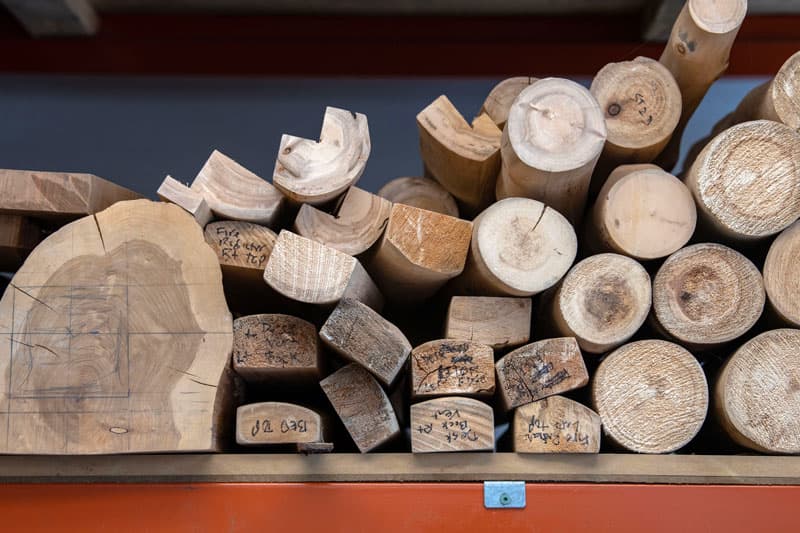
Father Groody sees woodworking as a “creative enterprise,” taking a raw material and asking how new life can be brought to it. “I think that woodworking is a sort of work of resurrection,” Father Groody explained. “It’s sort of bringing new life into something that’s day-by-day work as well as a creative process.”
To get the raw materials he needs, he works with the campus groundskeepers and their “unwritten policy” that whenever they cut down a tree, they give him a call. And some of the trees can be 180 years or older. “Maybe Father Sorin planted it himself,” he muses, “because when the first Holy Cross religious came here it was 180 years ago. It’s a way of thinking about their arrival, their mission, and all the stories that are contained in the grains of each one of the parts of wood.”
Father Groody also works with the carpenters on campus, skilled and ready to assist. He has worked on a number of projects with them including cabinets for his apartment and “for whoever comes after me.” Lately, his favorite thing to work on is river tables.
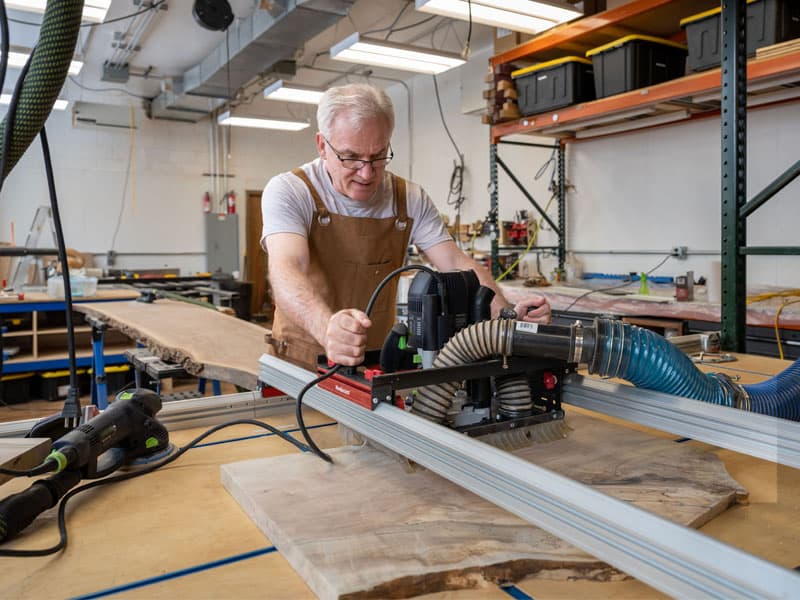
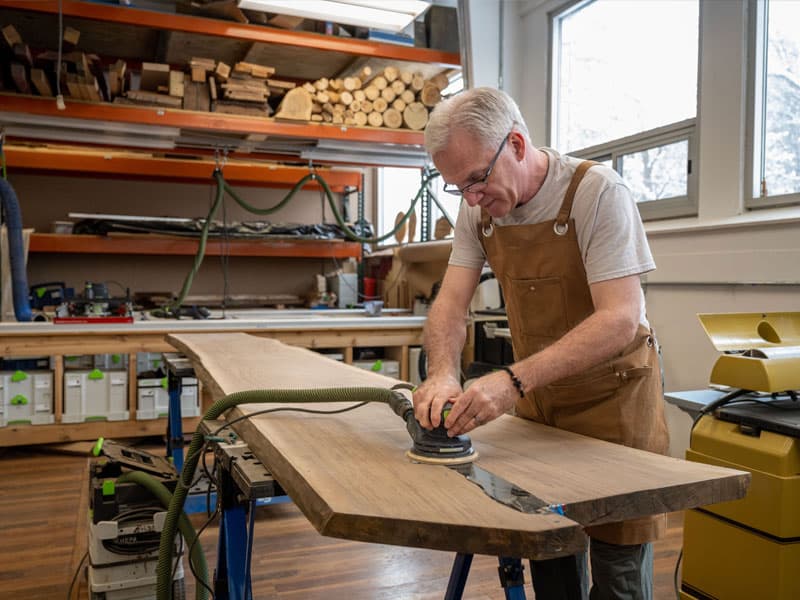
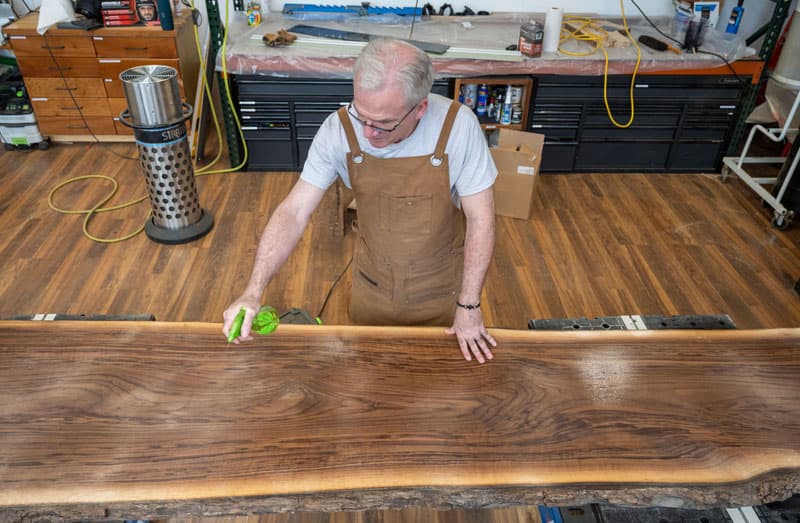
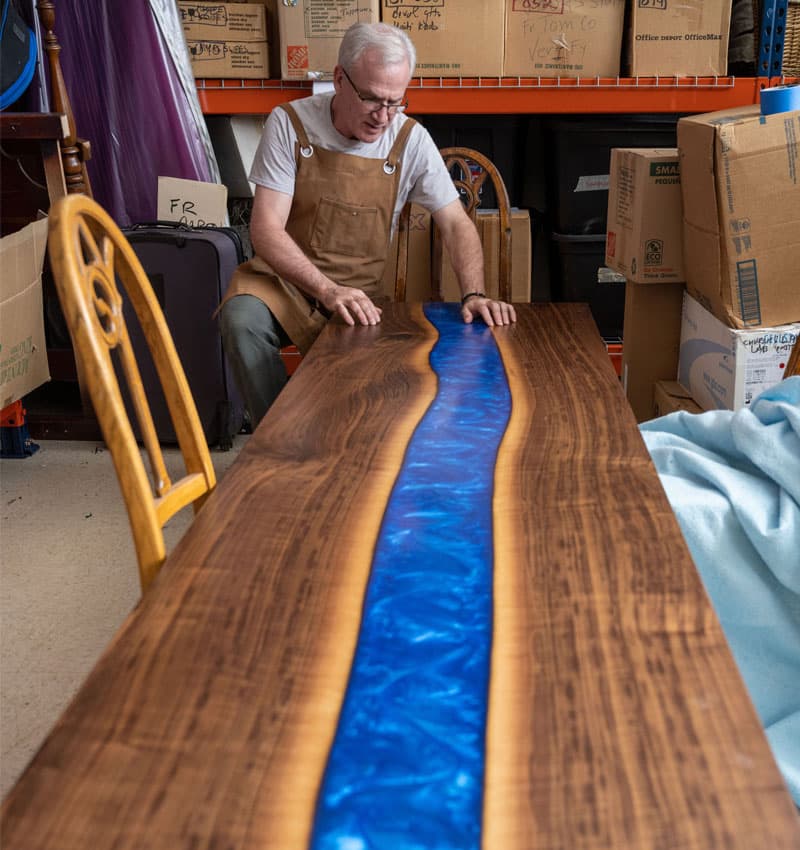
“Something of my own spirituality is about a deeper river, a centered river, a flowing river, a healing river. Somehow working with rivers reminds me of getting into the flow of God’s grace and really being in the flow of the spirit.”
His most recent finished product comes from the wood of a maple tree that stood outside the Main Building. “The tree was there for 120 years, and we’re making a conference table that we’ll be meeting around for years to come.”
The comparisons of working in wood and working in undergraduate education are easy to see. When speaking of the students, he asks, “How can we make something beautiful for our students? How can we actually help them have an even better education here? How can we help them discover their potential, their gifts and development? So, part of the process of woodworking, to me, goes hand in hand with my work in undergraduate education.”
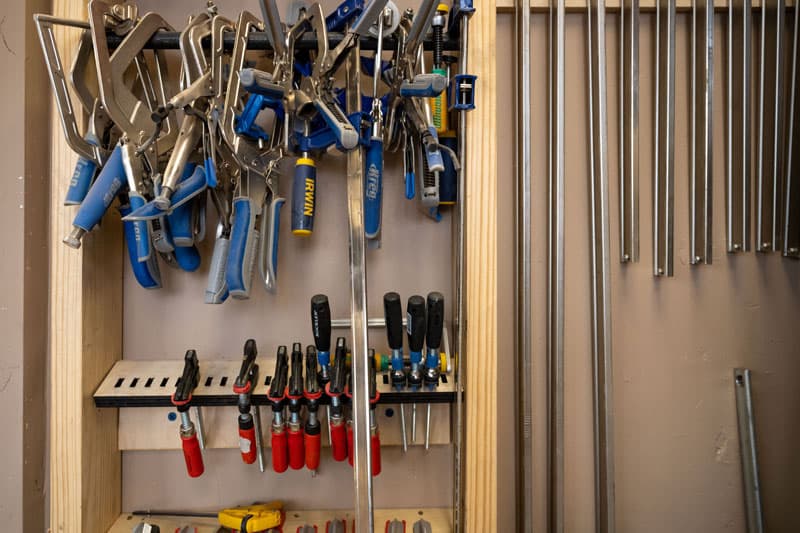
Making tables from freshly cut trees doesn’t come fast and easy. A number of steps have to happen before Father Groody can put his hands to it.
“You have to be patient when you do woodworking because you cannot do it at once. You have to take it in steps, in stages. You have to cut it down. You have to store it. You have to then dry it and then you mill it and then you have to repair it.”
He works on his projects a little bit each day, here and there, acknowledging that his “day job” doesn’t allow him to have much time to work in the woodshop. “But just even to get away for a half hour and to do something, it connects me to the earth.”
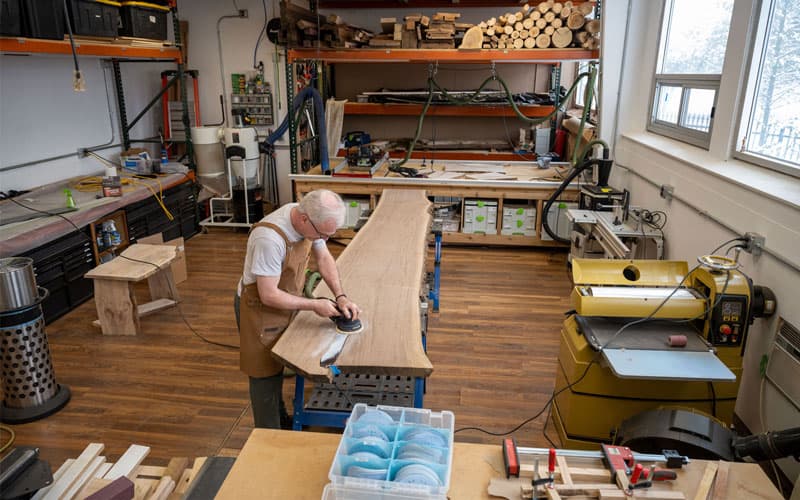
Once the wood for the river table is prepared, it is placed in a frame where he adds resin epoxy. To the resin he folds in color — “Notre Dame blue” and streaks of gold from mica powder. The resin cures, and then the table has to go through final finishing processes before being sealed. Lastly, it makes its way to its new home — in this instance, the meeting space in Father Groody’s office.
“I think one of the things that woodworking teaches me is you have to work with what you’re given by nature. And inevitably there are a lot of imperfections in woodworking, and you make a lot of mistakes when you do woodworking,” Father Groody said.
“You can actually let the imperfections be part of the picture, part of a story, part of what makes them and all of us beautiful.” –Fr. Dan Groody
Woodworking, for Father Groody, is a matter of connecting the creature with the Creator in the creation, the whole process leading into the work of love. He appreciates working in rustic furniture, pointing out that it’s very forgiving. Not only are there possible mistakes, but the wood itself comes with knots, holes or lines that are working against what he might want to do. But that’s where the beauty comes in. “It doesn’t have to be perfect, and you can take the imperfections and, from that, see it as part of the whole story of wood.”
None of this is lost on Father Groody as he notes that students often suffer from perfectionism. “One of the things that is important for them to see is you can actually let the imperfections be part of the picture, part of a story, part of what makes them and all of us beautiful.”
In the making of his table, he poured the resin alongside the wood and into some of the cracks and knots, highlighting them even more. “So, it’s learning how to see that you can work with imperfections and you can even let that be part of the work itself.”
